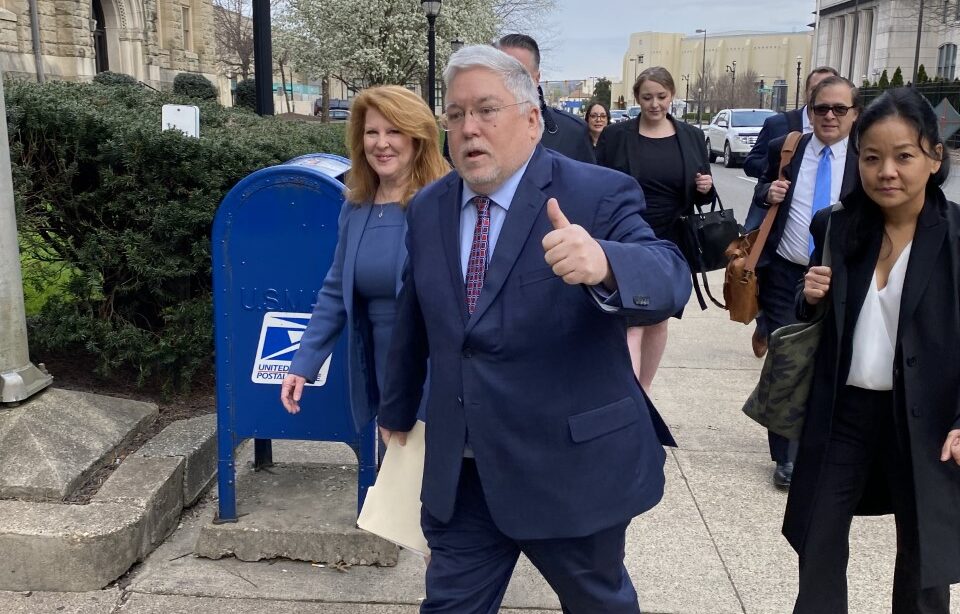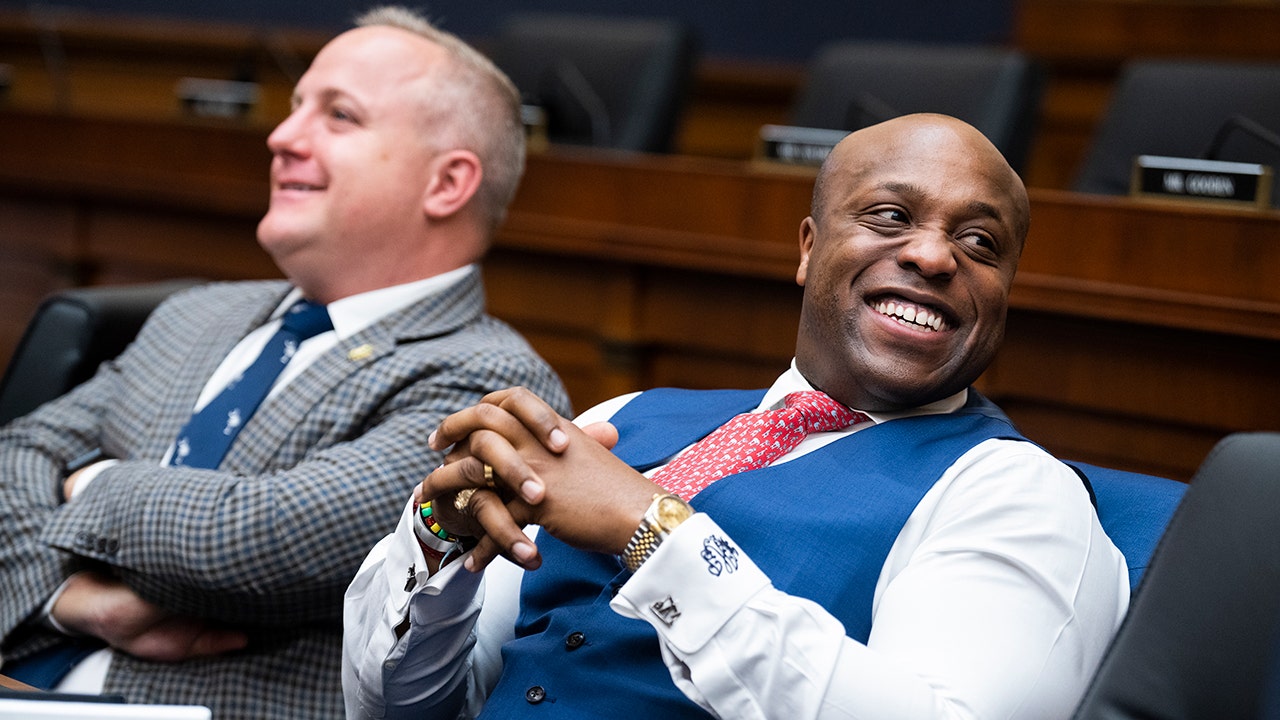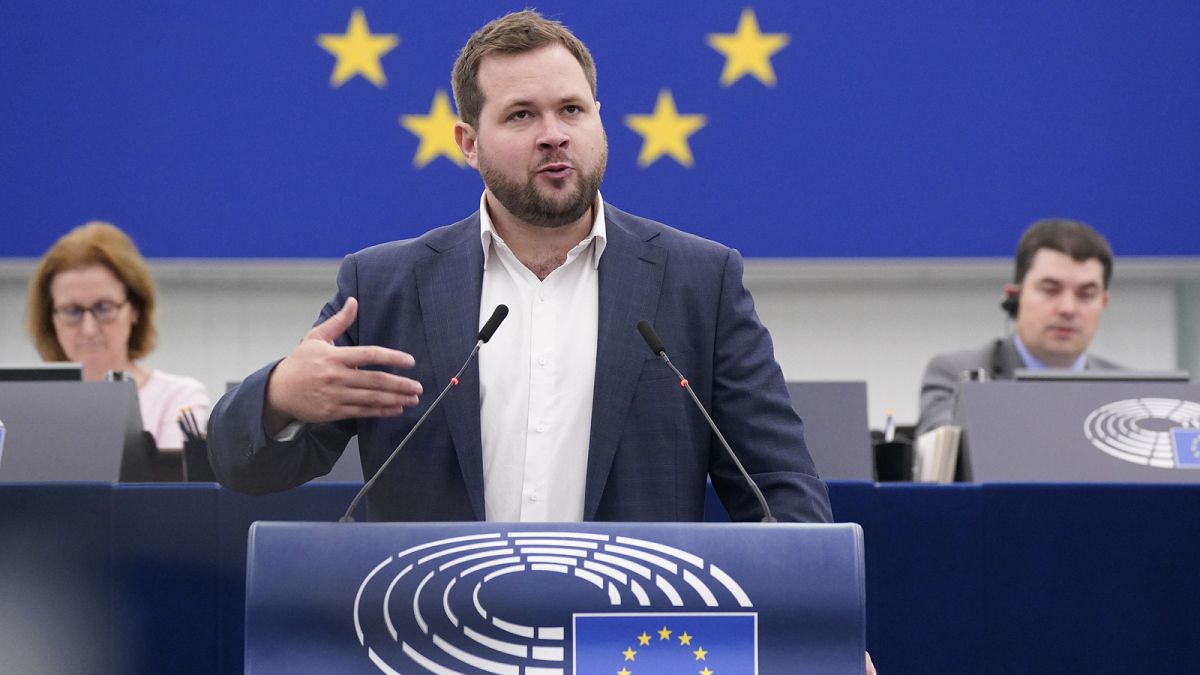Business
'Wicked' spectacles, merger gossip and movie industry woes at CinemaCon 2024
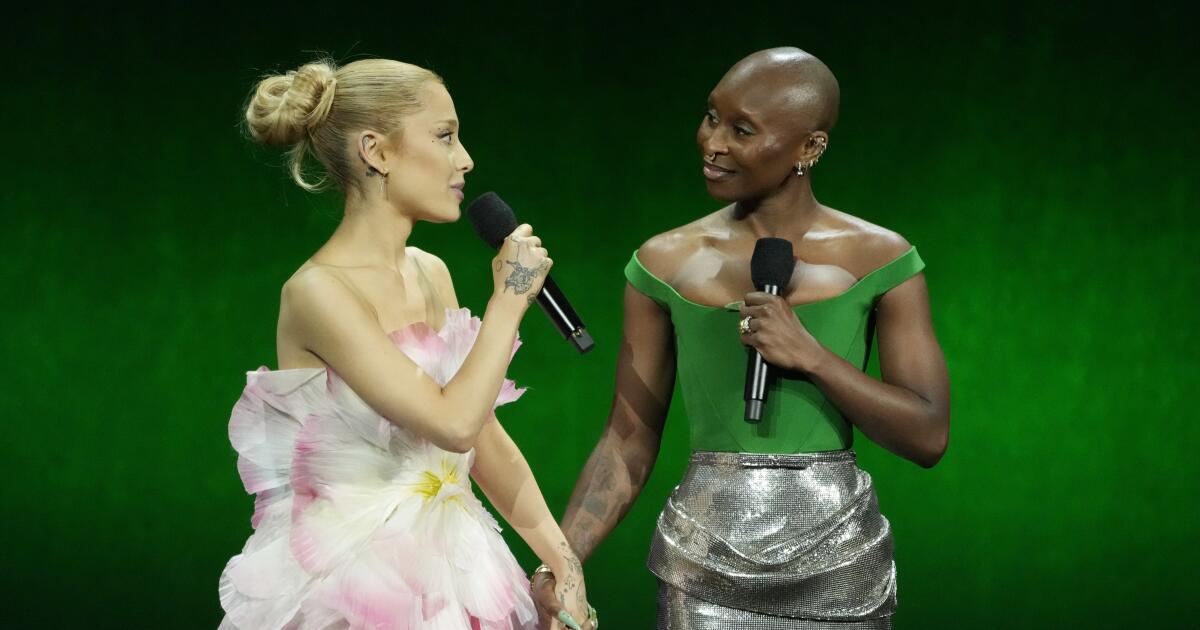
Movie theaters need more movies. Will they ever get enough to truly thrive again?
That was the central question overhanging CinemaCon 2024, the annual convention bringing together Hollywood studios and multiplex operators in Las Vegas this week.
Exhibitors pleaded with the major studios to release more films of varying budgets on the big screen, while studios made the case that their upcoming slates are robust enough to keep them in business.
Once again, CinemaCon, where studios trot out executives and movie stars to pitch their upcoming blockbusters, arrived at a particularly challenging time for the film industry.
After weathering a devastating pandemic that shut down theaters for months, two of the most essential parts of the Hollywood machine, writers and actors, went on strike. The work stoppages — which lasted a combined six months — prompted the leading entertainment companies to push a number of titles to 2025 from 2024, disrupting the supply chain and sparking widespread anxiety in the exhibition community.
Box office revenue in the U.S. and Canada is expected to total about $8.5 billion, which is down from $9 billion in 2023 and a far cry from the pre-pandemic yearly tallies that nearly reached $12 billion.
“It’s not enough for us to simply sit back and want more movies,” said Michael O’Leary, president of the National Assn. of Theatre Owners, during Tuesday’s state-of-the-industry address at the Colosseum in Caesars Palace. “We must work with distribution to get more movies of all sizes to the marketplace.”
Though a fuller release schedule is expected for 2025, talk of budget cuts, greater industry consolidation and corporate mergers has forced exhibitors to prepare for the possibility of a near future with fewer studios making fewer movies.
In the extravagant banquet and trade show halls of Caesars Palace, theater operators groaned about 2024 being painted as yet another “lost year” for cinema — determined in spite of the grim discourse to remain optimistic.
“All indications are the rest of the year is going to be a lot better,” said David Fetters, vice president of West Mall Theatres in Minnesota and South Dakota. “The product we’re seeing here is looking outstanding.”
The studios tried to give exhibitors something to hope for during their CinemaCon presentations — hyping their movie lineups, bringing out filmmakers and cast members, pulling silly stunts, and playing sizzle reels, sneak peeks, trailers and, in some cases, entire features for their industry audience.
‘Wicked’ brings down the house
While promoting their 2024-25 programming, the studios pulled out plenty of stops.
Distribution executives at Warner Bros. delivered their opening remarks dressed as Michael Keaton’s Beetlejuice; Dwayne Johnson joined a Polynesian dance troupe while introducing Disney’s “Moana 2”; and the head of distribution at Paramount entered the theater in full “Gladiator” armor on a gold chariot.
But Universal’s presentation of “Wicked” — director Jon M. Chu’s film adaptation of the hit Broadway musical — took the cake. Convention attendees arrived at their seats to find a surprise in their cup holders: roses that illuminated for a technicolor light show set to an instrumental medley of “Wicked” songs. After the overture, a pre-taped message to all “CinemaConians” from Jeff Goldblum’s imposing Wizard of Oz played onscreen, and Goldblum took the stage in real life.
He was later joined by Michelle Yeoh (Madame Morrible), Jonathan Bailey (Fiyero) producer Marc Platt and Chu, who fought back tears while talking about casting the film’s leading witches. On cue, Glinda and Elphaba themselves — Ariana Grande and Cynthia Erivo — emerged from the wings to thunderous applause.
Like Chu, Grande was overcome with emotion and paused briefly to compose herself while delivering her remarks. .
Other pictures teased during the studio presentations included Universal’s “Despicable Me 4,” Warner Bros.’ “Furiosa: A Mad Max Saga” and “Joker: Folie à Deux,” Paramount’s “A Quiet Place: Day One” and “Transformers One,” and Disney’s “Inside Out 2” and “Deadpool & Wolverine.”
Paramount deal looms
Amid the displays of corporate harmony, it was hard to ignore the elephant in the convention center: a potential merger between Paramount Global and David Ellison’s production company, Skydance.
Shares of Paramount Global — home of Paramount Pictures, CBS and several other legacy brands and franchises — took a nosedive Wednesday after news that a group of of the company’s directors are stepping down amid merger discussions.
This would be only the latest Hollywood merger in a string of deals, including Disney’s acquisition of Fox in 2019 and Warner Bros.’ union with Discovery in 2022.
When asked about the theatrical implications of another studio sale in an already rapidly consolidating industry, National Assn. of Theatre Owners President Michael O’Leary and Motion Picture Assn. Chairman Charles Rivkin largely waved it off.
“There’s always other things that we can do as an industry association to strengthen our industry, and I’ll cross that bridge when I get to it,” Rivkin said during a CinemaCon news conference.
Rather than avoiding the topic during the studio’s CinemaCon presentation on Thursday, Paramount Pictures chief Brian Robbins handled the situation with humor.
“There’s been a lot of speculation around our parent company around [mergers and acquisitions],” Robbins said before joking that Paramount’s head of domestic distribution, Chris Aronson, “has now thrown his hat into the ring as a bidder.”
“He’s starting a Kickstarter campaign,” Robbins continued as the crowd chuckled.
Japanese cinema and faith-based content reign
As the domestic film business has been thrown into turmoil in recent years, Japanese cinema and faith-based content have been two of movie theaters’ saving graces.
Industry leaders kicked off CinemaCon on Tuesday by singing the praises of Sony-owned anime distributor Crunchyroll’s hits — including the latest “Demon Slayer” installment.
Mitchel Berger, senior vice president of global commerce at Crunchyroll, said Tuesday that the global anime business generated $14 billion a decade ago and is projected to generate $37 billion next year.
“Anime is red hot right now,” Berger said. “Fans have known about it for years, but now everyone else is catching up and recognizing that it’s a cultural, economic force to be reckoned with.”
Last year, event-cinema company Fathom Events decided to expand its annual Studio Ghibli series, screening “Spirited Away,” “Princess Mononoke” and other Hayao Miyazaki classics for five nights each instead of just one or two. Fathom Events Chief Executive Ray Nutt said that the extended runs allowed those titles to gross 142% more than they had in the past.
“Anime was one that did very well for us,” Nutt said. “The team is really good at sourcing content and then figuring out where the audiences drive tickets.”
Another type of product buoying the exhibition industry right now is faith-based programming, shepherded in large part by “Sound of Freedom” distributor Angel Studios.
During its presentation on Wednesday, Angel Studios unveiled its lineup of “stories that amplify light,” including an animated feature telling the biblical tale of David and a live-action drama about a German pastor who conspires against the Nazis during World War. II.
“Some of the faith-based things, especially in our part of the country — the Midwest — have had a lot of good traction,” Fetters said.
Nutt added that Fathom Events has also had “huge success” connecting with faith-based audiences by screening content such as episodes of “The Chosen,” a drama series chronicling the life of Jesus Christ. The latest season of the show generated $32 million at the box office, according to Nutt.
Exhibitors make plea for more movies… and flexible windows
The greatest challenge facing theaters right now is a dearth of theatrical releases, exhibitors say. Theater owners urged studio executives at CinemaCon to put more films in theaters — and not just big-budget tent poles timed for summer movie season and holiday weekends.
“There’s been a bit of a shortage of good content because of the strikes and that sort of thing,” said Mark Shaw, owner of Shaw Theatres in Singapore. “And also, during the pandemic, we lost some of the audience. Trying to get that audience back into theaters is a bit of a challenge.”
“Whenever we have a [blockbuster] film — whether it be ‘Barbie’ or ‘Super Mario’ … records are set,” added Bill Barstow, co-founder of ACX Cinemas in Nebraska. “But we just don’t have enough of them.”
During an industry think-tank panel on Wednesday, Disney distribution executive Cathleen Taff defended the company’s decision to delay certain movies — including the animated film “Elio” and a live-action remake of “Snow White” — to 2025, explaining that at least some of those titles were not finished in time for a 2024 release.
“From a studio perspective … we need to walk in tandem together,” Taff said.
“We have to pick some good dates and we had to do those shifts. And of course we thought about the theaters, but the reality is we’re not going to release an unfinished film.”
An additional issue affecting owners of independent theaters and smaller chains is studio-imposed three-week minimum runs for major movies. Multiple exhibitors told The Times that these businesses can’t afford to let one movie to take up a screen for three weeks because there simply isn’t enough population where they operate to fill seats for that long.
“If you run it for two weeks, the community has already seen it,” said Colleen Barstow, vice president of ACX Cinemas.
“There is no need to require three-week or longer commitments,” said Chris Johnson, chief executive of Classic Cinemas in Illinois. “If you have a hit, we will hold it.”
The next frontier: ‘alternative content’
One way that exhibitors are trying to fill the void of studio releases is by showing “alternative content” — from reissues of beloved films and screenings of TV shows to musical performances and sporting events.
The best example of this phenomenon is AMC Theatres’ distribution of Taylor Swift’s “The Eras Tour” and Beyonce’s “Renaissance.”
Fathom Events, which has been in the business of alternative content for decades, is going further by attaching live and pre-recorded Q&As to their screenings, as well as handing out collectible merchandise as an extra incentive for audiences.
“You go to go to a regular movie, you buy the ticket, you watch the movie — I don’t mean to demean the movie experience by any stretch of imagination — but that’s pretty much it,” Nutt said. “With us, you are going to … get something special.”
Larger companies such as AMC have been partnering with studios to level up their merchandise game as well. See: the infamous “Dune 2” popcorn bucket, which inspired Disney to promise at CinemaCon to deliver a must-have “Deadpool 3” popcorn bucket.
“There are some studios that inadvertently make crude and rude popcorn buckets,” joked Marvel Studios president Kevin Feige during Disney’s presentation. “And then there are popcorn buckets designed by Deadpool.”

Business
Tesla to cut 601 jobs in Bay Area, a sign of more problems for EV maker
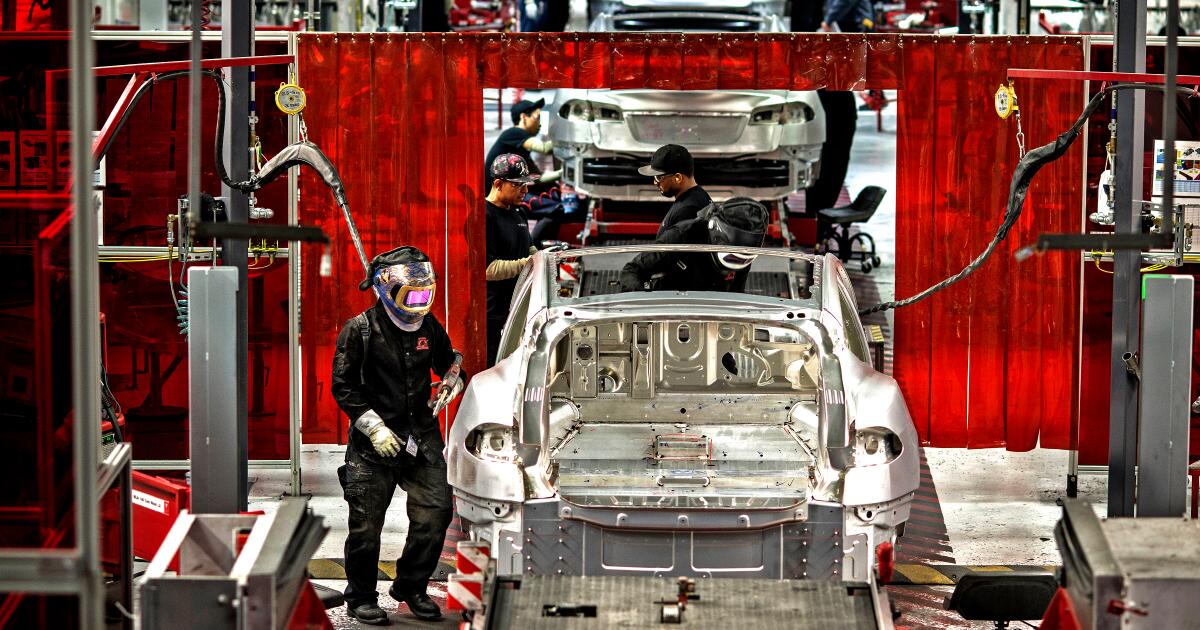
In the fourth straight week of layoff announcements, Tesla said it is now concentrating on reducing staff at its Bay Area facilities as part of a larger move to cut jobs globally.
State filings show that Tesla is planning to lay off 378 employees at its Fremont facilities and 233 at its Palo Alto offices.
The layoffs will occur over a 14-day period starting June 20.
An email to Tesla officials requesting comment was not immediately returned.
The layoffs come as the company struggles with flagging sales, top executives fleeing, a declining stock price and quality problems with the new Cybertruck. The low-cost Model 2 recently promised by Chief Executive Elon Musk also appears to be dead.
It is not immediately clear which positions are being cut. The San Francisco Chronicle reported they would include technicians, electricians, software engineers, plumbers and athletic trainers.
On April 15, Musk announced in an email to staff that Tesla was cutting more than 10% of its workforce, citing job overlap and the need to reduce costs.
A week later, Telsa said it was laying off 3,332 workers at its facilities and offices in Fremont, Palo Alto, Burbank and Lathrop.
Including the latest cuts, Telsa has announced 3,933 layoffs this year in California.
“As we prepare the company for our next phase of growth, it is extremely important to look at every aspect of the company for cost reductions and increasing productivity,” Musk wrote in the April email.
“As part of this effort, we have done a thorough review of the organization and made the difficult decision to reduce our headcount by more than 10% globally,” he continued. “There is nothing I hate more, but it must be done.”
Business
ChatGPT's new voice mode is giving 'Her' vibes

The days of an interactive, almost-human virtual assistant could be coming sooner than you think.
Tech company OpenAI has unveiled the latest update to ChatGPT, which now includes a voice mode that allows users to communicate more conversationally with the AI system. In a video posted Monday on X by OpenAI Chief Executive Sam Altman, company officials ask ChatGPT to tell them a bedtime story involving robots and romance.
“Ooh, a bedtime story about robots and love?” ChatGPT responds in a cheerful female voice. “I’ve got you covered!”
The system proceeds to tell a story about a curious robot “in a world not too different from ours,” and then pivots to different voices when company officials periodically interrupt to ask it to speak more dramatically, in a robot-like voice or in a sing-song way.
The new update, known as GPT-4o, quickly received comparisons to the 2013 Spike Jonze movie “Her,” starring Joaquin Phoenix, in which a lonely man falls in love with his virtual assistant Samantha, voiced by Scarlett Johansson. Even Altman appeared to refer back to the film, saying in a blog post that it “feels like AI from the movies; and it’s still a bit surprising to me that it’s real.”
(But that movie isn’t entirely rosy about AI taking on the role of a human companion, cautioned Wired Executive Editor Brian Barrett in a column titled “I Am Once Again Asking Our Tech Overlords to Watch the Whole Movie.” In the column, Barrett notes that at least one OpenAI employee heeded that advice. He quoted a tweet in which the employee said that re-watching “Her” “felt a lot like rewatching Contagion in Feb 2020.” )
“Getting to human-level response times and expressiveness turns out to be a big change,” Altman wrote.
Previous versions of ChatGPT were text-based, with users typing questions to the system and receiving written responses instantly. Past attempts to make the system give more human-like responses, beyond simple fact regurgitation or rudimentary stories, were largely rebuffed by ChatGPT.
Though bedtime tales about robots and love seem benign, AI and its potential effect on jobs is a pressure point in Hollywood and played a major role in last summer’s dual strikes led by the Writers Guild of America and the Screen Actors Guild-American Federation of Television and Radio Artists.
OpenAI, in particular, has not been shy about courting the entertainment industry and has met with studio and talent agency executives to discuss another of its products, Sora, an AI tool that uses text-based prompts and turns them into visuals that can be cinematic in quality.
Recently, indie pop artist Washed Out used Sora, which is not yet publicly available, to create a four-minute music video for the song “The Hardest Part.” The music video zooms through scenes from a couple’s life that are completely AI-generated.
Beyond Hollywood, other industries are also flirting with AI, such as fast food operators. Those businesses are now looking to AI to run drive-through orders or walk-up self-service kiosks to reduce the financial effect of California’s new $20 minimum wage for restaurant workers in certain establishments.
Business
Pro-Palestinian activists protest at Google developer conference amid Israel-Hamas war

Dozens of protesters blocked the entrance of Google’s developer conference in Mountain View, Calif., for roughly 90 minutes on Tuesday, demanding that the tech giant drop its work with the Israeli government amid the country’s war with Hamas in the Gaza Strip.
The protest group, which accuses Israel of committing genocide against Palestinians in Gaza, held two events on Tuesday that it said involved hundreds of participants.
A group chanted “Shame on Google” and “Google Cloud rains blood” in the front of the entrance to the conference at Shoreline Amphitheatre, where the tech giant was expected to announce updates to business including its Android and Gemini AI systems. Separately, the protesters held a rally at a nearby park.
The protesters, who call themselves No Tech for Genocide, have been demanding that Google end its cloud computing contract with the Israeli government, known as Project Nimbus.
The latest Israel-Hamas war began when Hamas militants attacked southern Israel on Oct. 7, killing about 1,200 people and taking an additional 250 hostage, according to the Israeli government. Palestinian militants still hold about 100 captives, and Israel’s military has killed more than 35,000 people in Gaza, according to Gaza’s Health Ministry, which doesn’t distinguish between civilians and combatants.
Protesters at the Google event said they believe the company’s technology is being used by the Israeli military for surveillance of people in Gaza through facial recognition, leading to the arrest and detention of Palestinians.
Google did not immediately respond to a request for comment.
The company has said that its technology is used to support numerous governments around the world, including Israel’s, and that the Nimbus contract is for work running on its commercial cloud network, with the Israeli government ministries agreeing to comply with Google’s terms of service and acceptable use policy.
“This work is not directed at highly sensitive, classified, or military workloads relevant to weapons or intelligence services,” Google said in an April statement.
One of the protesters at the Tuesday conference was Ariel Koren, a former Google employee who alleges the company retaliated against her in 2021 after she raised concerns about the contract. Google said at the time that it had investigated the case and found no evidence of retaliation.
“We want to make sure that every single person who comes here and who might think that today’s a day about celebrating technological advancements — every single one of those people needs to understand that the reality is much darker than what Google has painted,” Koren said.
Organizers estimated that 50 people participated in the demonstration in front of the conference. The rally at the park drew a bigger crowd.
One of the participants objected to Google holding its conference the day before Palestinians commemorate 76 years since their mass expulsion from what is now Israel. Palestinians refer to their displacement during the 1948 Israeli-Arab war as the Nakba, which is Arabic for catastrophe.
The protest in front of the Google I/O conference began at around 9:30 a.m., with protesters moving toward a bag checkpoint. Conference attendees had been asked to take out their laptops and have their bags searched.
The event’s security closed the entrance as protesters moved to stand in front, leaving a large line of attendees who were later directed to another area to proceed to the conference. A line of protesters held a red sign that proclaimed “Google Stop Fueling Genocide.” The demonstration ended at about 11 a.m.
Google’s developer conference draws thousands of people each year, many of whom are developers eager to learn about the company’s latest technology.
After witnessing the protest, several attendees said they planned to do more research on Project Nimbus.
“I feel that it is worth a shot to listen to others when they have a point of view,” said Andres Haro, a 30-year-old software security engineer from Utah, as he waited in a long redirected line into Google I/O’s entrance.
The protest comes after more than 50 Google employees were fired following sit-ins and protests that took place at Google office locations last month protesting Project Nimbus. Google said it terminated those workers after an investigation determined they were involved in disruptive activity that violated its policies governing employee conduct.
A spokesperson for the group behind the sit-ins, called No Tech for Apartheid, said they were not involved with Tuesday’s protest.
“We’re asking more questions about what role we and our employers are playing in the world,” said Roni Zeiger, a product developer who participated in the rally on Tuesday at Charleston Park, near the Google event. “World events have continued to evolve and … people, including employees, are asking harder questions and wanting to work at places that are consistent with their values.”
-

 Politics1 week ago
Politics1 week agoHouse Dems seeking re-election seemingly reverse course, call on Biden to 'bring order to the southern border'
-

 World1 week ago
World1 week agoStand-in Jose Raul Mulino wins Panama presidential race
-

 News1 week ago
News1 week agoCompass Direct LLC’s 2024 Registration in North Carolina
-

 World1 week ago
World1 week agoTech compliance reports, Newsletter
-

 News1 week ago
News1 week agoColumbia University cancels its main commencement ceremony after weeks of turmoil
-

 News1 week ago
News1 week agoMan, 75, confesses to killing wife in hospital because he couldn’t afford her care, court documents say
-
News1 week ago
UCLA to resume in-person classes after Gaza protest crackdown
-

 Politics1 week ago
Politics1 week agoPresidential polls show deadlocked race as party conventions quickly approach












